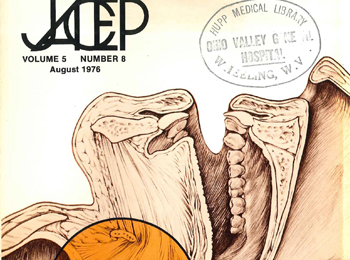
 The Combitube and King LT along with the LMA and its successors have revolutionized prehospital airway management and completely changed anesthetic delivery for nonemergent cases. The LMA is now used in the vast majority of elective surgical cases worldwide. These devices have also provided options for rescue ventilation in emergency departments. Prior to these devices, if intubation failed, the only option was mask ventilation or cricothyrotomy. Unfortunately, difficult direct laryngoscopy and difficult mask ventilation can often occur in the same patients. After the invention of effective rescue ventilation devices, failure to place a tube didn’t necessitate an immediate surgical airway. It is reassuring to know that obesity in and of itself is not a problem for effective supraglottic airway use (assuming the patient is placed in head-elevated positioning). The LMA and Combitube were centrally featured in the first Difficult Airway Algorithm, created by the American Society of Anesthesiology in 2004. Along with video laryngoscopes, airway management options have expanded dramatically in the last two decades.
The Combitube and King LT along with the LMA and its successors have revolutionized prehospital airway management and completely changed anesthetic delivery for nonemergent cases. The LMA is now used in the vast majority of elective surgical cases worldwide. These devices have also provided options for rescue ventilation in emergency departments. Prior to these devices, if intubation failed, the only option was mask ventilation or cricothyrotomy. Unfortunately, difficult direct laryngoscopy and difficult mask ventilation can often occur in the same patients. After the invention of effective rescue ventilation devices, failure to place a tube didn’t necessitate an immediate surgical airway. It is reassuring to know that obesity in and of itself is not a problem for effective supraglottic airway use (assuming the patient is placed in head-elevated positioning). The LMA and Combitube were centrally featured in the first Difficult Airway Algorithm, created by the American Society of Anesthesiology in 2004. Along with video laryngoscopes, airway management options have expanded dramatically in the last two decades.
Explore This Issue
ACEP Now: Vol 37 – No 08 – August 2018End-Tidal CO2 Detection and Use of Neuromuscular Blockers
Another seminal change in airway management, also from the 1980s, was the widespread adoption of end-tidal CO2 detection for the confirmation of tracheal tube placement and effective ventilation. Prior to this, unrecognized esophageal intubation was a major risk in elective surgical cases and very common in emergency airways. Capnography or colorimetric devices now confirm all intubations in all settings, in or out of the hospital. Academic emergency physicians identified the dangers of unrecognized esophageal intubation and changed the standard of care.
Emergency physicians (led by Ron Walls, MD, and Michael Murphy, MD, in the 1980s) were largely responsible for the widespread adoption of muscle relaxants being used in emergency airways. That coupled with end-tidal CO2 detection and rescue ventilation devices led to a sharp decrease in the number of cricothyrotomies performed in emergency departments. According to Chang et al, at New York’s Bellevue Hospital, cricothyrotomies declined from 1.8 percent in trauma patients to less than 0.2 percent after the initiation of the emergency medicine residency program.1
Prior to the universal establishment of emergency medicine residency programs at academic centers, it was a great challenge for emergency medicine practitioners to acquire formal training in airway management. It’s noteworthy that The Difficult Airway Course (created by Dr. Walls, Dr. Murphy, Robert Luten, MD, and Robert Schneider, MD) has had an incredible impact on disseminating airway education to tens of thousands of emergency physicians. The transition from anesthesia to emergency physicians being the primary airway providers (in trauma and all ED patients) coincided with the growing respect and power of emergency medicine that developed within academic centers. Having been a resident during emergency medicine’s “adolescence,” it is inspirational for me to see emergency physicians as senior administrators of major academic centers and medical schools.
Pages: 1 2 3 | Single Page





One Response to “Emergency Medicine’s 50-Year Evolution of Airway Management”
September 2, 2018
Helio Penna GuimaraesDear Prof Levitan:
Thanks a lot fir this very nice lecture ! Definitely the airway management became more effective and secure , in ER, after the Emergency Medicine specialty was establishid.